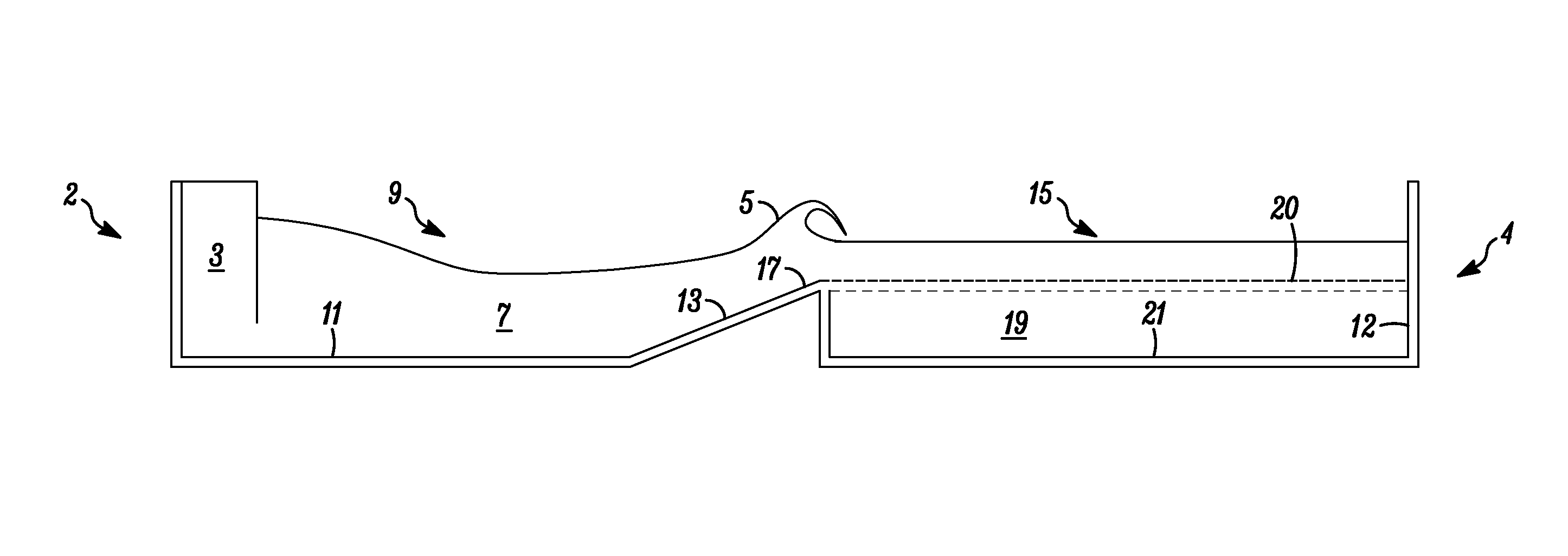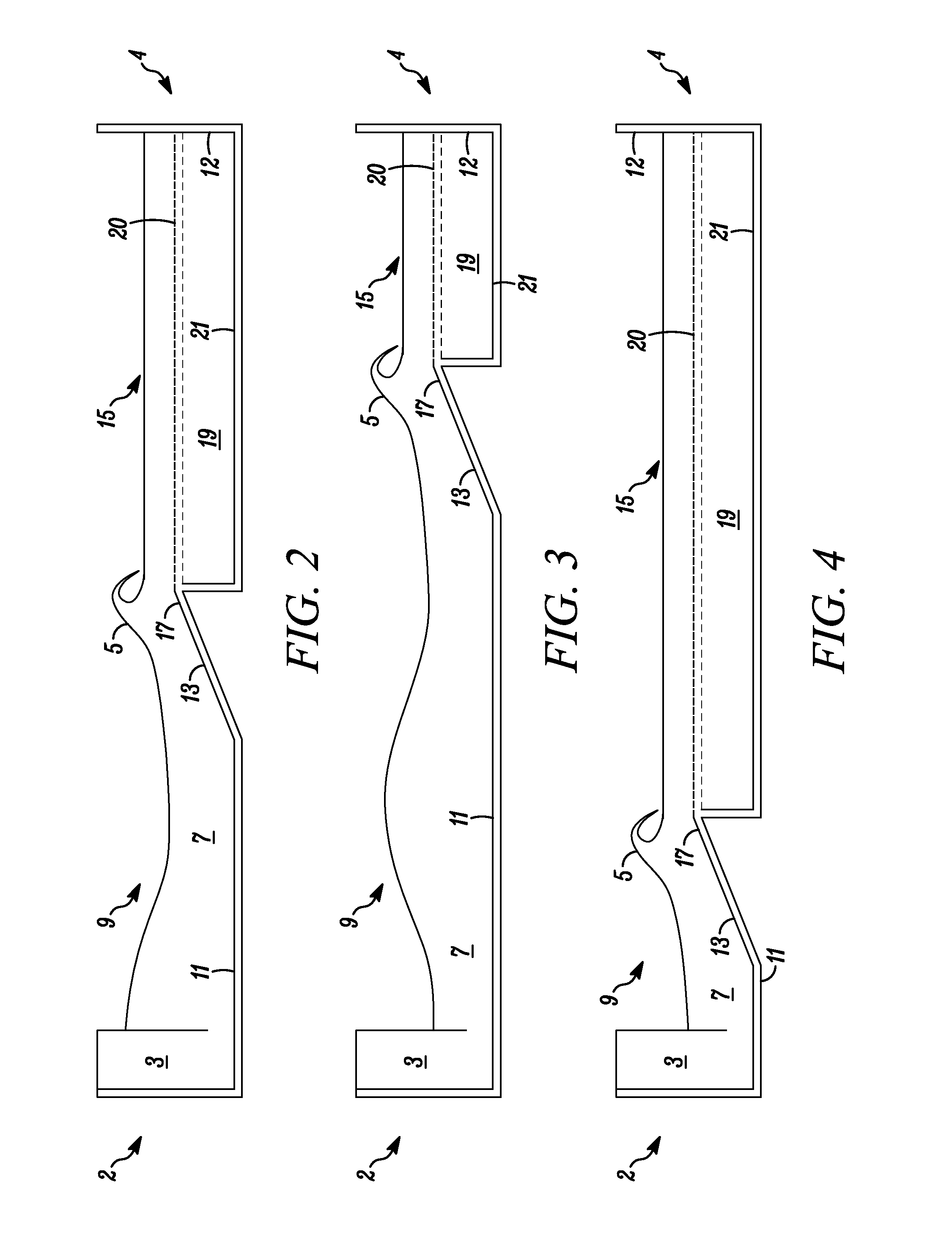Method and apparatus for dampening waves in a wave pool
a wave pool and wave technology, applied in the field of wave pools, can solve the problems of reducing the “surfable” quality, increasing the attendant risks, and requiring participants to perform surfing maneuvers thereon, so as to reduce the detrimental increase the size of the pool or the risk of the floor design, and reduce the effect of harmful wave reflection and rip curren
- Summary
- Abstract
- Description
- Claims
- Application Information
AI Technical Summary
Benefits of technology
Problems solved by technology
Method used
Image
Examples
example one
[0097]When it is desirable to produce barrelling waves that range in height from three to eight feet high, with a period of about fifteen seconds, the preferred depth of horizontal floor 11 or Pool depth is typically about three times the wave height. Accordingly, if the desired wave height is three feet, the preferred pool depth would be nine feet deep, and likewise, if the desired wave height is eight feet, the preferred pool depth would be twenty four feet deep. These represent preferred minimum and maximum pool depth values dpool for each circumstance.
[0098]The preferred slope of inclined section 13 to create barrelling type waves, having a fifteen second period, is preferably between about 5% and 10%, which is the slope that extends up from horizontal floor 11. At the same time, inclined section 13 preferably terminates at the breaker depth, and raised floor 20 is preferably extended substantially horizontally from inclined section 13 toward end wall 12 at that same depth. In t...
example two
[0101]When it is desirable to produce spilling waves that range in height from three to eight feet, with a period of about eight seconds, the preferred depth of horizontal floor 11 or Pool depth is typically about three times the wave height. Accordingly, if the desired wave height is three feet, the preferred pool depth would be nine feet. Likewise, if the desired wave height is eight feet, the preferred pool depth would be twenty four feet. These represent the preferred minimum and maximum pool depth values dpool for each circumstance. And, to create spilling type waves, the preferred slope of inclined section 13 is preferably at or below 5%, which is the slope that extends up from horizontal floor 11. At the same time, as discussed previously, inclined section 13 preferably terminates at the breaker depth, wherein the top 17 of inclined section 13 and raised floor 20 would also be located at the same depth.
[0102]In this example, based on the above factors, the preferred breaker d...
example three
[0105]In another example, when it is desirable to produce barrelling waves that are five feet high, having a period of fifteen seconds, in a wave pool having a horizontal floor 11 that is fifteen feet deep, the following applies:
[0106]The slope of inclined section 13 is preferably about 10% to enable barrelling type waves to be produced. And, in this example, based on the above factors, the preferred breaker depth is determined to be about three feet. Accordingly, in this example, with the wave height being five feet, and the preferred pool depth being about fifteen feet, the preferred submerged depth of raised floor 20 would be about three feet. Note that if this value is much greater than three feet, the waves won't break properly, and if this value is much less than three feet, there is the risk of backwash occurring.
[0107]It has also been determined that the preferred depth of wave dampening chamber 19 beneath raised floor 20 is about three times the depth of raised floor 20, or...
PUM
 Login to View More
Login to View More Abstract
Description
Claims
Application Information
 Login to View More
Login to View More - R&D
- Intellectual Property
- Life Sciences
- Materials
- Tech Scout
- Unparalleled Data Quality
- Higher Quality Content
- 60% Fewer Hallucinations
Browse by: Latest US Patents, China's latest patents, Technical Efficacy Thesaurus, Application Domain, Technology Topic, Popular Technical Reports.
© 2025 PatSnap. All rights reserved.Legal|Privacy policy|Modern Slavery Act Transparency Statement|Sitemap|About US| Contact US: help@patsnap.com



